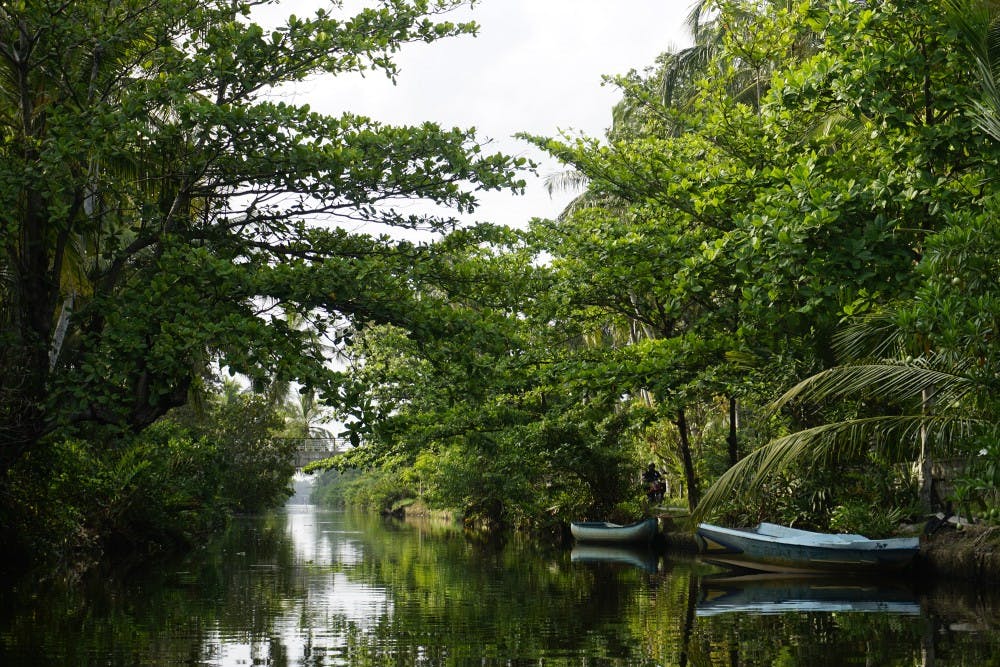When my parents got on a plane from Sri Lanka to the United States while immigrating here, they didn’t quite leave behind everything they knew and loved like they thought. They carried slivers of the Sri Lankan food and culture with them, that rooted and grew in our home and Sri Lankan community.
For many people I know, I am the only Sri Lankan they have ever met, and their only introduction to Sri Lanka. Sometimes, I’m the first time they’ve even heard of the tiny teardrop island in the Indian Ocean.
So I get a lot of questions.
And more than that, I feel a lot of pressure to answer each question well. I need to do it justice, but answering common questions about Sri Lanka is not always as easy as it seems.
One question I get a lot is, “So what’s the culture like?” People often expect to hear “Oh, it’s like India’s” or it's vibrant and colorful all the time.
Don’t get me wrong, Sri Lanka has a vibrant, colorful culture, but the visions people have of our festivals and celebrations don’t reflect our culture clearly on an everyday basis.
In reality, Sri Lanka — while approximately the size of Indiana — is full of different religious, ethnic, racial and cultural groups that contribute in different ways to the country’s culture. And while there are things that tie all Sri Lankans together, it's difficult to explain it all to someone in a 30-second lull of a conversation. I’m always afraid of not representing Sri Lanka accurately.
In fact, there’s a lot I don’t even fully understand because my understanding is filtered through short visits, reading Sri Lankan news and my parents who can only completely speak to the culture of their specific region, ethnic group and religious group.
Another question about Sri Lanka I find difficult to answer is “What’s the food like?” Again, people generally want me to compare Sri Lankan cuisine to something more familiar, like India’s.
The short answer is Sri Lankan “curries” are less thick and oily than Indian “curries,” and they're more heavily spiced. Spices are also often roasted in mustard oil before use, which intensifies flavor. Sri Lankan "curries" also tend to be more coconut milk-based, and as an island nation, we use more seafood. There are also countless dishes, from kottu roti to string hoppers, that don’t have other clear comparisons.
There is no one, homogenous Sri Lanka, so there is no one, homogenous Sri Lankan food. Just like the country itself, Sri Lankan food is diverse and dynamic, drawing from cultures, traditions and influences I couldn’t begin to sum up in a short conversation.
Despite our tendency to generalize cultural foods, most cultures don’t speak about their own cuisine in monolithic terms because cuisines, from French to Chinese, are made up of countless subcategories.
My dad’s hometown, near Negombo, Sri Lanka, is right along the coast and perfect for fresh fish. But my mom’s home of Piliyandala, Sri Lanka, is further inland and serves karawala, a dried fish. Likewise, the Dutch-influenced, largely Tamil area of Jaffna has a distinct cuisine of its own.
For immigrants, children of immigrants or anyone part of a diaspora, food is everything. It’s often the last legacy of your family’s culture that you shed. And with food, you get three chances each day to celebrate your culture and connect to memories of family and place.
But only by visiting Sri Lanka did I begin to see that there's more to Sri Lankan food than what sat at my dinner table every night — the dishes my mom learned to prepare from her mom, who were both in a particular region and part of a particular ethnic and religious group in Sri Lanka. I also began to realize painting international cuisines with a broad brush is unfair to certain regions and groups that are often overshadowed.
So with that realization, describing Sri Lankan food became a lot more difficult. I know it must be even more difficult for my parents, who know so much more and therefore would have even more trouble summing up their country’s food in a few sentences.
Despite what I’ve said, if you want to learn more about a person’s cultural food, don’t be afraid to ask. I still love getting questions about the food I grew up with, but just don’t be phased when I have trouble explaining. Also, be aware that the foods I mention are the ones I grew up with, not the ones every other Sri Lankan grew up with. I can only speak for myself.




